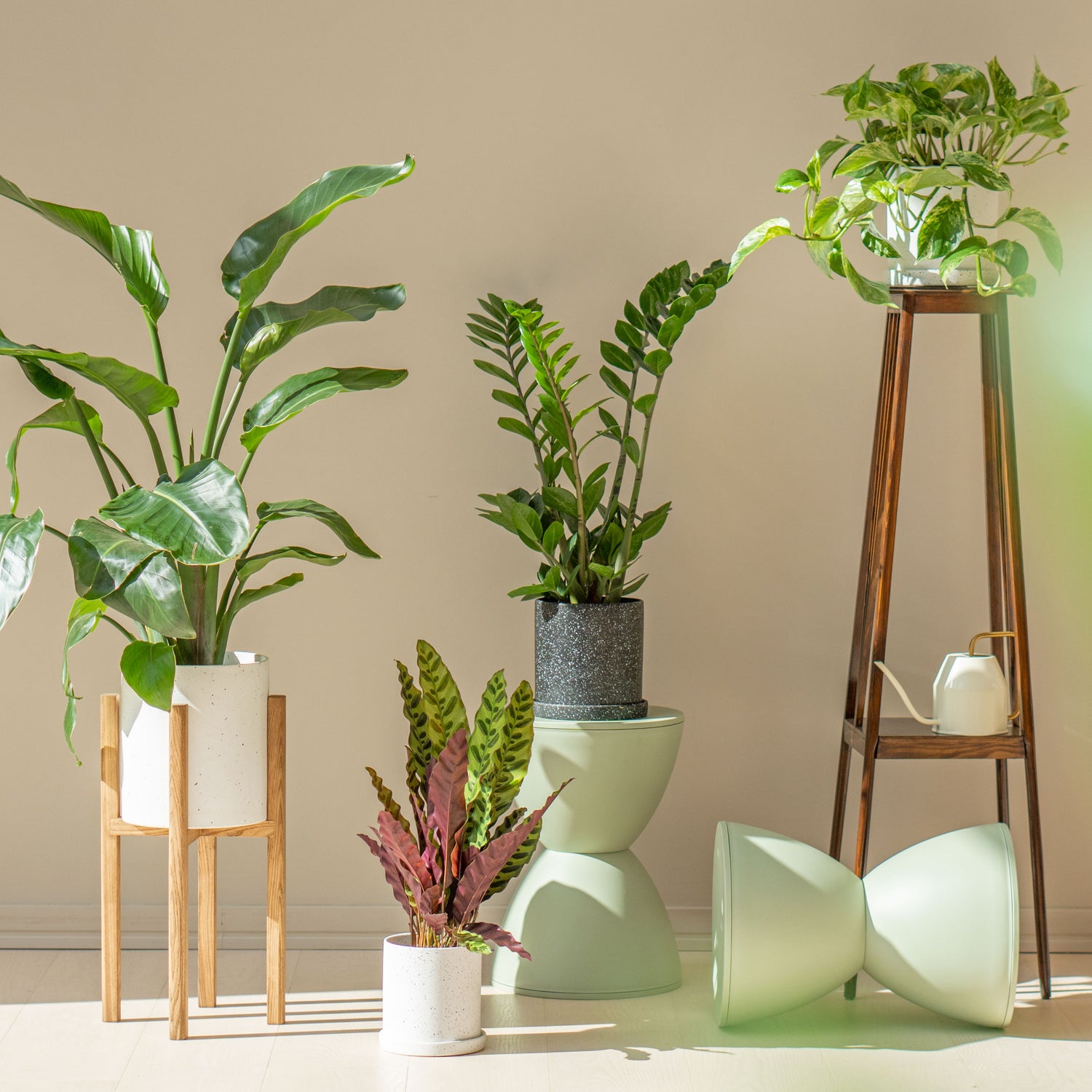
How to Prepare Your Houseplants for the Fall Season
As the air turns crisper and daylight grows shorter, our beloved indoor greenery feels the shift just as much as we do. This fall transition is a critical window for your houseplants—skip it, and you may notice slowed growth, leaf drop, increased pest activity, or even stress-induced damage. By adapting your care routine now, you’re giving your plants a gentle handover into the cooler months, helping them stay robust and poised to thrive again come spring.
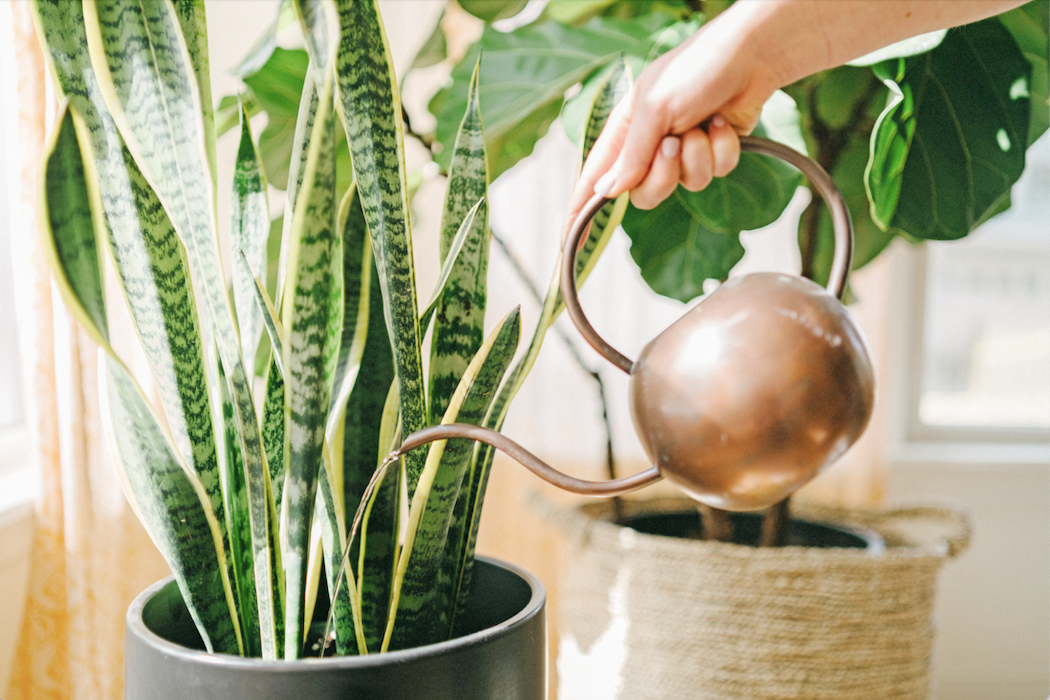
Adjust the Watering Routine
As growth slows in fall, most plants need less water. Overwatering is one of the most common problems during the colder months, especially for citrus, olive, and other Mediterranean plants that prefer to dry out between waterings.
What to do:
- Always check that the top 1–2 inches of soil are dry before watering.
- If you tend to overwater, consider switching to Planteia’s premium breathable soil mix. It’s designed to promote airflow and drainage, reducing the risk of root rot while still retaining enough moisture for healthy growth.
- Pair with a pot that has proper drainage holes, especially for citrus or olive trees.

Maximize Light Exposure
With shorter days and lower light intensity, your plants may struggle to photosynthesize enough energy. Without enough light, even hardy plants like ZZ plants or rubber trees may drop leaves or become leggy.
What to do:
- Move plants closer to bright windows, ideally south- or west-facing.
- Rotate plants weekly to ensure even growth.
- If your space lacks natural light, consider adding a grow light like FYTO Grow Lamp to support light-sensitive plants.
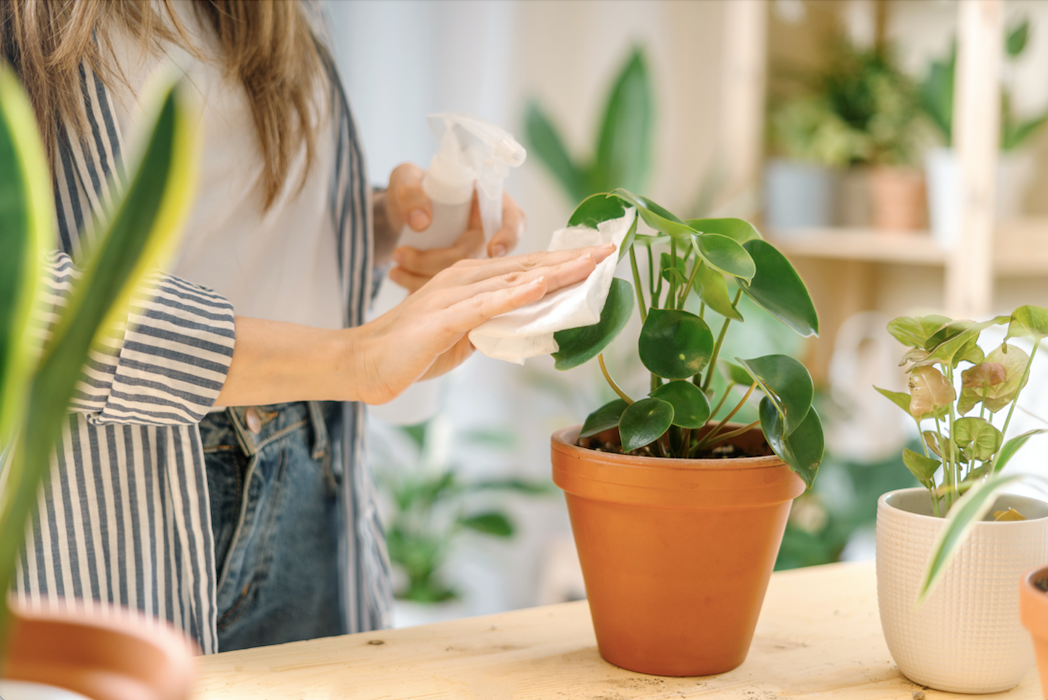
Clean and Inspect the Leaves
Dusty leaves block sunlight, and pests like spider mites or mealybugs thrive in dry indoor environments. As plants weaken during this transition, they become more susceptible to infestations.
What to do:
- Wipe leaves gently with a damp cloth or shower them off with lukewarm water.
- Inspect the undersides of leaves and stems for pests.
- Quarantine any plant that shows signs of infestation.
- Consider using a gentle neem oil spray for natural pest prevention.

Mind the Temperature
Houseplants are sensitive to sudden temperature shifts, especially tropical varieties. Cold drafts, dry heating vents, or being placed too close to windows can all shock your plants and lead to leaf drop.
What to do:
- Keep plants away from open windows, exterior doors, or direct airflow from heaters.
- Avoid sudden temperature fluctuations—most plants prefer a consistent 18–24°C (65–75°F).
- Citrus and olive trees can tolerate slightly cooler nights but should still be kept above 12°C (54°F).
- Move plants like Calathea White Fusion or Monstera Thai Constellation at least 6 inches away from cold windows.

Gently Prune and Remove Dead Growth
As your plant's growth slows, it's natural for older leaves to yellow and drop. Cleaning up spent leaves helps prevent disease and keeps the plant looking its best. However, fall isn’t the time for major pruning.
What to do:
- Trim off yellow or dying leaves with clean scissors.
- Avoid cutting healthy stems or reshaping your plant—save that for spring.
- For large statement plants like Fiddle Leaf Fig or Meyer Lemon Tree, remove only what’s necessary and avoid stress-inducing cuts.
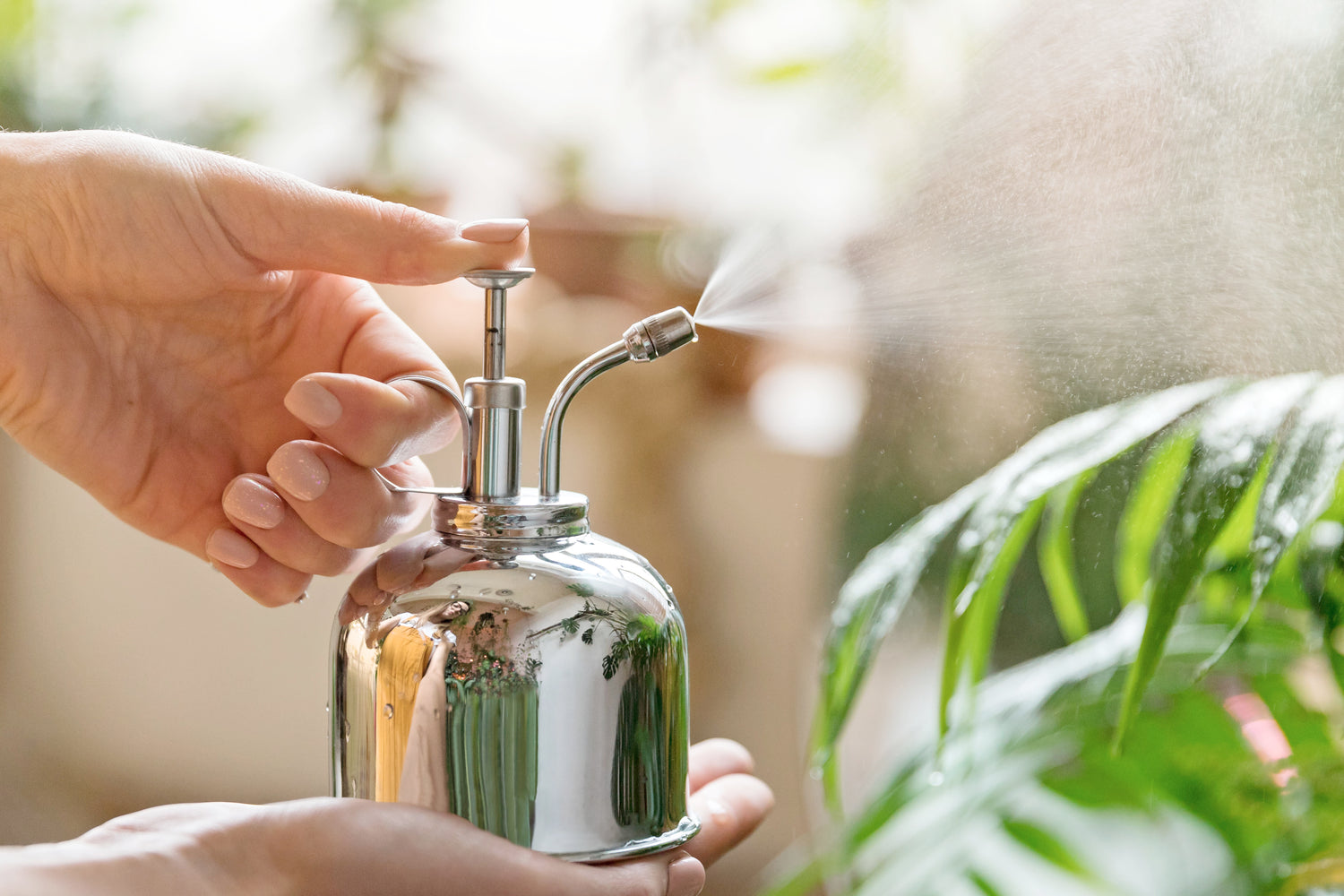
Watch the Humidity
Indoor heating often dries out the air, creating a harsh environment for humidity-loving tropicals. Brown edges on leaves are often a sign of low humidity—not underwatering.
What to do:
- Group plants together to create a natural humidity zone.
- Use pebble trays under pots or invest in a room humidifier.
- Mist plants sparingly—only if they tolerate it well.
- Plants like Calathea White Fusion, Philodendron Pink Princess, and Monstera Thai Constellation thrive with 50–60% humidity.
- Avoid placing these plants near radiators or heating vents.
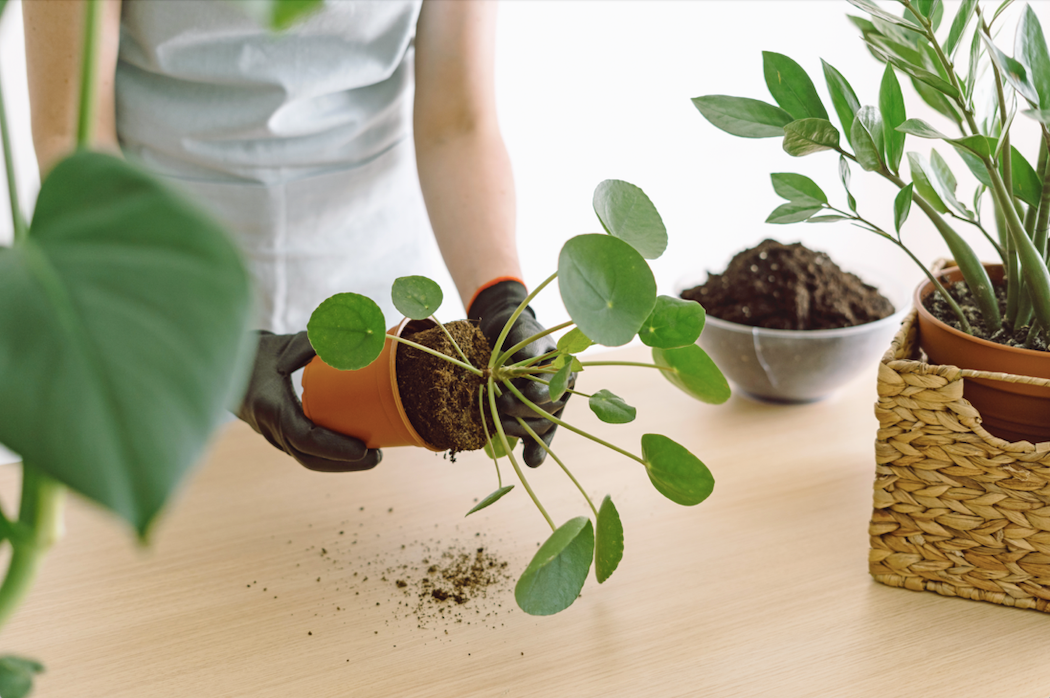
Hold Off on Repotting
Fall and winter are periods of rest for most houseplants. Repotting during dormancy can disturb their root systems and lead to shock or stunted growth.
What to do:
- Only repot if absolutely necessary (e.g., severe root rot or pests).
- Wait until spring for any upgrades in pot size or soil changes.
- Most Planteia houseplants arrive freshly repotted in breathable pots with our premium potting mix, so repotting isn't needed for 6–12 months.
- If you must repot, use our Indoor Potting Mix to support drainage and root health.
Fall is all about helping your houseplants rest, reset, and prepare for the quieter months ahead. A few simple changes—less water, more light, better humidity, and a careful watch—can make all the difference. And when spring comes around, your plants will reward you with stronger roots, new growth, and a vibrant comeback.
🍂 Happy fall from the Planteia team!
